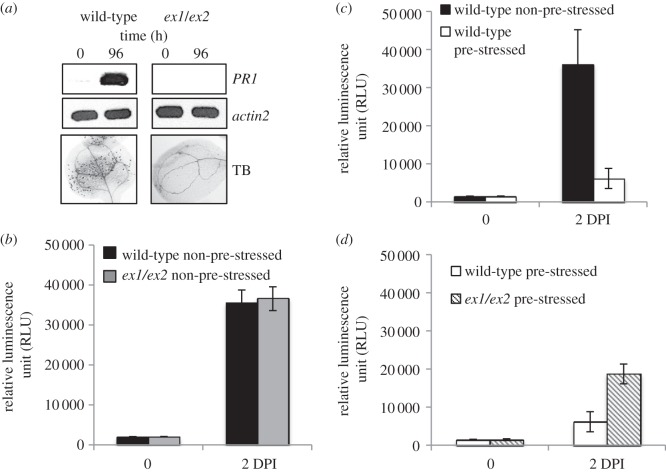Figure 3.
1O2-mediated and EX-dependent acclimation of Arabidopsis seedlings exposed to light stress confers cross-protection against the biotrophic pathogen P. syringae DC3000. (a) 1O2-mediated and EX-dependent signalling in wild-type seedlings exposed to the combined low temperature/higher light stress for 96 h as shown in figure 2a induces programmed cell death as revealed by trypan blue (TB) staining and upregulation of PR1 gene expression, both of which are suppressed in ex1/ex2 seedlings. (b–d) Plants were spray-inoculated with virulent P. syringae DC3000 that constitutively expresses a LUCIFERASE reporter gene [45]. Bacterial growth was determined after different lengths of incubation by measuring the luciferase activity in extracts of inoculated plants. (b) Non-pre-stressed wild-type and ex1/ex2 seedlings show a similar high susceptibility to the virulent pathogen. (c) Wild-type seedlings acclimated to light stress show an enhanced resistance against the pathogen as indicated by the strongly reduced number of bacteria grown on seedlings 2 days after infection (DPI). (d) Inactivation of the 1O2- and EX-dependent signalling pathway in ex1/ex2 seedlings only partially restores the susceptibility of non-acclimated control wild-type seedlings. Results in (b–d) represent mean values of three independent experiments ±s.d.

